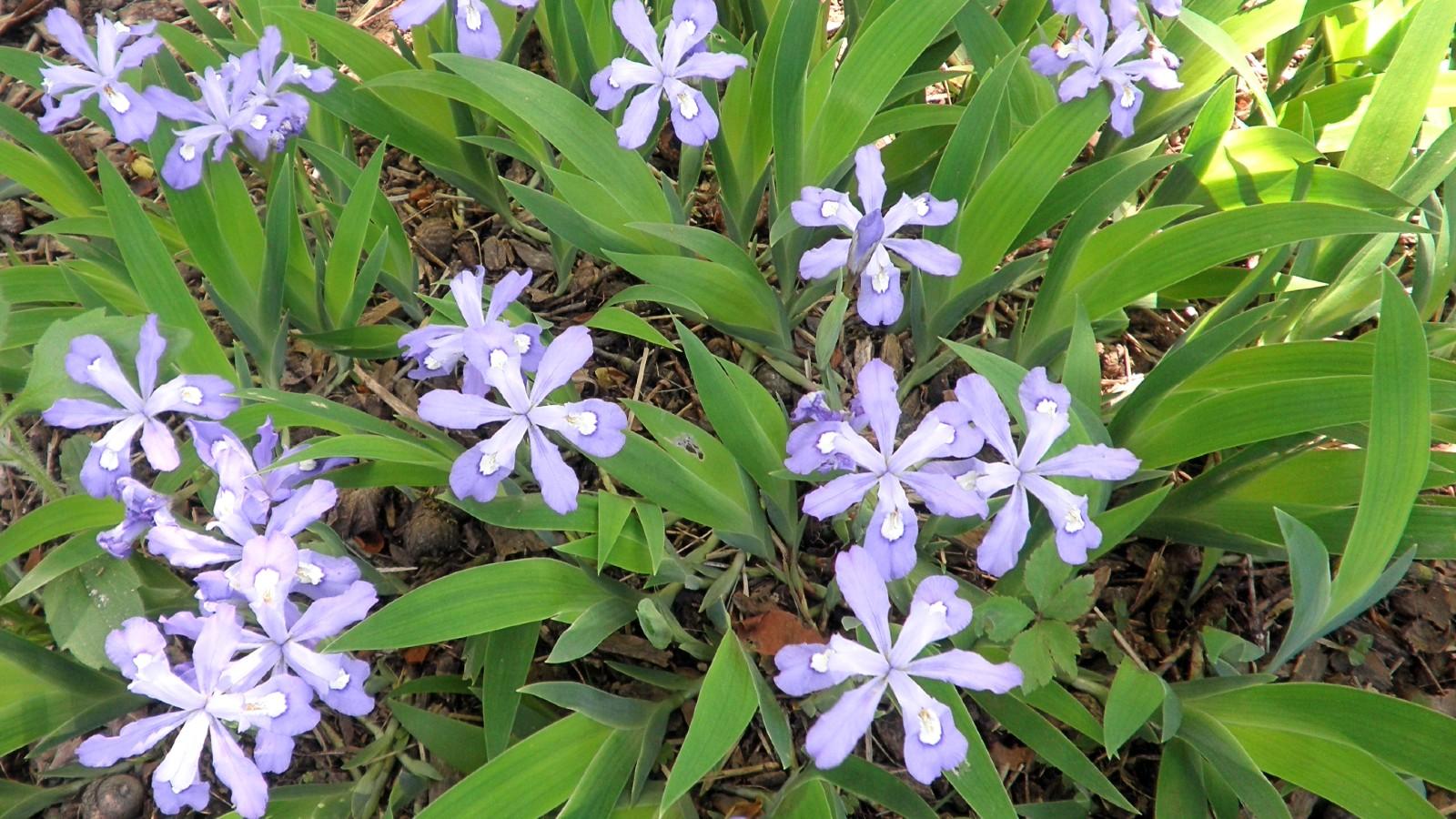Groundcovers are plants that are relatively low growing, cover the ground, and add to the overall appearance of the landscape. While lawn grasses are the most commonly used groundcover, the term “groundcover” usually refers to plants other than lawn grasses. Most groundcovers are not intended to be walked on and may be damaged by pedestrian traffic.
Uses of groundcovers
Groundcovers are often underused in landscapes. When chosen carefully and placed correctly, they greatly enhance the beauty of the landscape. In addition to their aesthetic value, they fulfill a number of other important functions:
- Growing grass in the shade;
- Lawn substitutes in narrow oddly shapes areas where mowing and edging is difficult;
- Lawn alternatives to reduce overall landscape maintenance;
- Control erosion, especially on slopes where lawn grass is difficult to maintain;
- Attractive accents for areas too small to accommodate shrubs;
- Obstruct traffic without impeding view
- Provide vegetative growth for very wet or very dry locations; and
- Used in an area to control weeds.
When skillfully interplanted with trees and shrubs, groundcovers impart a textural balance to the planting. Groundcovers also give unity to the landscape by tying together all the elements of the planting.
In practice, the groundcovers most frequently used are those that are vigorous growing, hardy, and most easily propagated. Any slope greater than 12 percent is best planted with a groundcover. Around buildings, groundcovers are superior to paving. They perform extremely well to reduce heat, glare, noise, and dust.
Plant selection
The first step in selecting a groundcover is determining its purpose. Next, review your evaluating of the planting site. As specific plants are considered match their characteristics and requirements against site conditions. Finally, consider color, texture, height, required maintenance and freedom from pests and diseases.
Groundcover List
Native Plants for Shady Slopes
Native Plants for Sunny Slopes
(PDF) Maryland Department of Agriculture: Control Soil Erosion and Rainwater Runoff
Planting
When matching plants to the site, preparing soil and planting, groundcovers follow the same principles as trees and shrubs. Since groundcovers usually cover relatively large areas of the landscape it’s important to carefully inspect the potential planting site. Pay special attention to existing weeds, especially perennial types. Eliminate problem weeds prior to soil preparation. Have the soil tested and properly prepare the soil in terms of pH, nutrient levels, drainage, and aeration. Work the soil eight to 10 inches deep and incorporate any lime, fertilizer, or organic matter required. If the soil is on the heavy side, incorporate a three- to four-inch layer of organic matter to help loosen the soil and improve aeration and drainage.
Most groundcovers can be planted anytime during the growing season, but either spring or fall is preferred. Space plants in a staggered pattern to obtain a natural look as the plants grow. Spacing depends on plant growth rate, immediate effect, and the number of plants used, which is usually based on cost. Most groundcovers are spaced from six inches to two feet apart. When planting on slopes, mulch or netting may be required to control erosion until your plants are established.
After planting, check soil moisture conditions weekly and water plants whenever the soil begins to dry out. Apply enough water to thoroughly wet the soil down to the base of the root systems. Keep the areas between groundcover plants weed free. You can mechanically remove weeds by hand or cultivation or you can apply a weed suppressing mulch between plants. If you can use a pre-emergence herbicide to suppress weed growth read and follow label directions carefully. Over-application of a pre-emergence herbicide can slow establishment of your groundcover plants.
Maintenance
While groundcovers require substantially less maintenance than lawn grasses, they do require some attention. Groundcover plants vary in their need for supplemental watering. However, during periods of drought all groundcovers will benefit from extra water. When water is needed, apply enough to wet the soil to the depth of the root system. Use a hand trowel or garden spade to determine soil moisture depth.
Apply fertilizer each year for the first three years after planting to achieve as rapid growth as possible. Once the desired area is covered, fertilization is needed only if nutrient- deficiency symptoms appear. The recommended rate for groundcover fertilizer is one to two pounds of nitrogen per each 1,000 square feet of planted area. Fertilizer can be applied as a single application in early spring or split the application into two equal amounts, one in early spring and the other approximately six to eight weeks later. Any general purpose granular fertilizer (synthetic or organic), such as 10-6-4, can be used to supply the required nitrogen. Apply fertilizers only when the foliage is dry.
While weeds are not a major problem in most established groundcovers, there are exceptions. Good weed management practices prior to planting go a long way in reducing weed problems later. Hand-pulling can control occasional weed invaders, but where weeds have become a major problem the use of a pre-emergence herbicide may be warranted. Grass is particularly troublesome in groundcovers and there are post-emergence herbicide sprays that can be used to remove grass without harming the groundcover. Always carefully read and follow all label directions when using chemical herbicides.
Groundcovers planted in the vicinity of trees and shrubs become the depository for fallen leaves and small branches. Small amounts of debris are unsightly; large amounts can cover the groundcover and block light. Clearing trapped debris is a maintenance practice to consider when planning for groundcovers. Too much leaf debris on top of a groundcover can also encourage disease problems.
